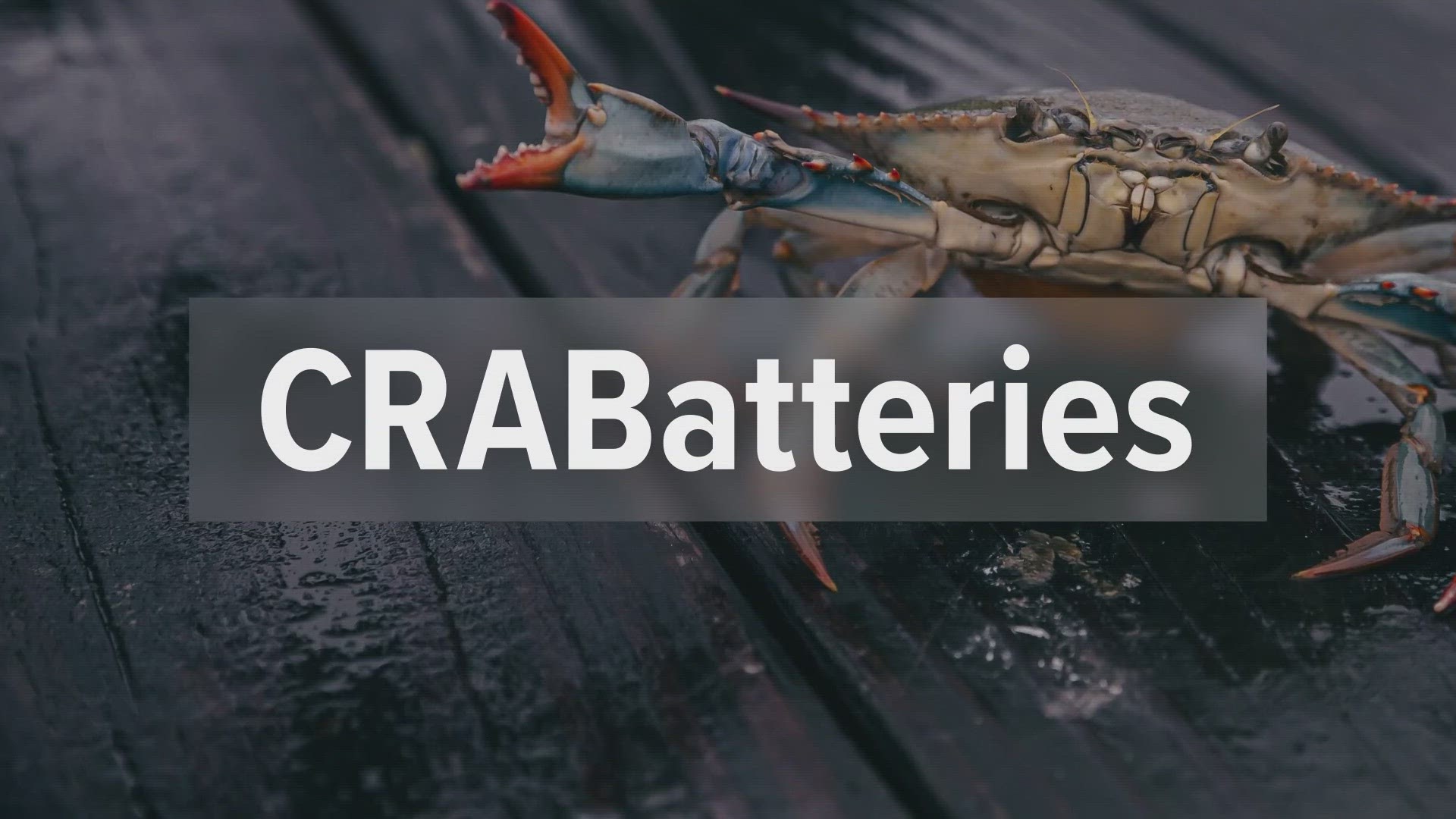MARYLAND, USA — Maryland's population of blue crabs has declined slightly this year, according to an annual survey.
The winter dredge survey estimates the number of blue crabs living in the Chesapeake Bay, which helps calculate the percentage of the crab population removed by harvest each year.
This is important because blue crabs are a keystone species in the Bay, according to environmentalists.
This year's survey reveals there are 317 million blue crabs in the Bay, compared to 323 million in 2023; that is about a 2% decrease in population. Officials say this is still well above the management threshold of 72.5 million crabs, which determines if the female crab population is being overfished.
Male crabs also experienced a decrease, going from 55 million crabs in 2023 to 46 million crabs this year, representing a 16% decrease.
The number of juvenile crabs, despite being below average for the past four years, actually increased this year, rising to 138 million.
“An increase in juvenile recruitment is certainly welcome news, and the stock and population as a whole remains healthy,” said Maryland DNR Fishing and Boating Services Director Lynn Fegley. “However the continued relatively low recruitment numbers warrant a closer look at our approach moving forward.”
Back-to-back years of low juvenile crab numbers has prompted the Chesapeake Bay Stock Assessment Committee to plan a new stock assessment for blue crabs, which will begin this summer. The new test will allow for a more in-depth look at the ecology of the species, how it is modeled, and whether reference points should be revised.
“We haven’t had a real evaluation of the assumptions we have in the model, and there are new analytical methods that could be applied to the data,” Mandy Bromilow, DNR’s blue crab program manager said.
The stock assessment is set to be completed and published in March 2026.
For now, the Chesapeake Bay Stock Assessment Committee will review the survey results for this year and provide their scientific advice for management.
Why are blue crabs important?
As both predator and prey, they are a keystone species in the Chesapeake Bay.
Pollution, habitat loss, and harvest pressures threaten the species.
- Larvae help feed menhaden, oysters and other filter feeders.
- They serve as food for fish, birds and even other blue crabs.
- They are among the top consumers of bottom-dwelling organisms, or benthos.
- They feed on march periwinkles, aka snails, helping regulation their populations. Periwinkles feed on marsh grasses so environmentalists are concerned less crabs would negatively affect salt marsh habitat.
- They support recreational and commericial fishing. One-third of the nation's blue crab comes from the Bay.
Here's how you can help:
- Boaters should follow posted speed limits and no-wake zones to avoid harming underwater grass beds and steer clear of grasses growing in shallow waters.
READ NEXT:
WATCH NEXT:
Do you have a news tip on this story or any other story? We want to hear from you. Tell us about it by emailing newstips@wusa9.com.
MORE WAYS TO GET WUSA9
DOWNLOAD THE WUSA9 APP
Apple App Store: WUSA9 News on Apple
Google Play Store: WUSA9 News on Android
HOW TO ADD THE FREE WUSA9+ APP TO YOUR STREAMING DEVICE
ROKU: add the channel from the ROKU store or by searching for WUSA9.
For both Apple TV and Fire TV, search for "WUSA9" to find the free app to add to your account. Another option for Fire TV is to have the app delivered directly to your Fire TV through Amazon.
SIGN UP TO RECEIVE WUSA9 NEWSLETTER
Subscribe to our daily WUSA9 Newsletter for top stories from WUSA9 curated daily just for you. Get content and information right now for can’t-miss stories, Commanders content, weather, and more delivered right to your inbox.

